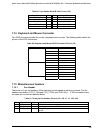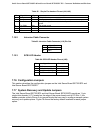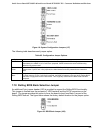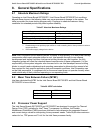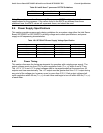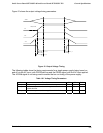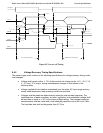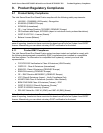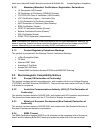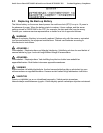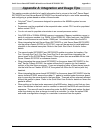
Intel® Server Board SE7320SP2 & Intel Server Board SE7525GP2 TPS Appendix A
Revision 2.0
174
Appendix A: Integration and Usage Tips
This section provides a bullet list of useful information that is unique to the Intel
®
Server Board
SE7320SP2 and Intel Server Board SE7525GP2 and should be kept in mind while assembling
and configuring a system based on either of these boards.
• Only Intel
®
Xeon™ processors designed to operate on the 800MHz system bus are
supported.
• Processors must be populated in the sequential order; socket CPU1 must be populated
before socket CPU 2.
• You do not need to populate a terminator in an unused processor socket.
• Only DDR 266 or 333MHz SDRAM memory is supported. Memory installation occurs in
pairs of contiguous sockets (e.g. DIMM 1A and DIMM 1B). Within each pair, the DIMMs
need to be the same size and vendor. DIMM pair 1 is located furthest from the MCH.
• When integrating the Intel Server Board SE7320SP2 or Intel Server Board SE7525GP2
into the server chassis SC5300 or SC5275-E, users will be required to install additional
standoffs in the chassis base plate. Refer to the Quick Start User's Guide for further
details.
• The server boards SE7320SP2 and SE7525GP2 enable six system fan headers: Sys
Fan 1 through Sys Fan 6. Sys Fan 5 and Sys Fan 6 are used when integrating the
server board in the SC5300 Base Chassis. Other system fans are available for the Intel
Server Chassis SC5275-E or reference chassis.
• When integrating the server board SE7320SP2 or the server board SE7525GP2 in the
Intel
®
Server Chassis SC5300, the system utilizes the 2U passive (no fan) heatsink
solution of the Intel Xeon processor. If you are integrating either of these server boards
into the Intel Server Chassis SC5275-E, the system will utilize the 2U active (with fan)
heatsink.
• When integrating the server board SE7320SP2 or the server board SE7525GP2 into the
server chassis SC5300, ensure the rubber “L” gasket is installed under the server board
prior to mounting the server board to the base plate. Thermals will be adversely affected
without this gasket in place. Refer to the Quick Start User Guide for details on where the
gasket is affixed.
• When setting up the boot order sequence in the BIOS setup, keep in mind that any time
one of the devices in the boot menu is modified or removed, the BIOS will reset the boot
sequence. The user will need to ensure they enter the BIOS setup and restore the boot
order they desire any time a change is made to a controller (i.e. enter the option ROM
and make a configuration change) or a controller is removed from the system.



